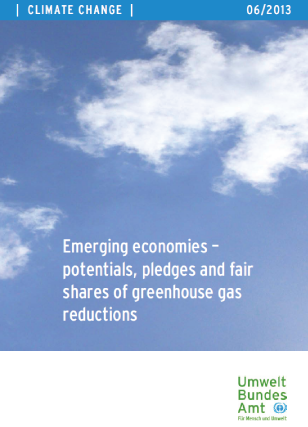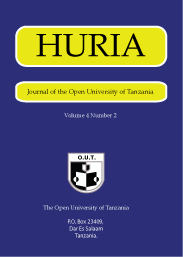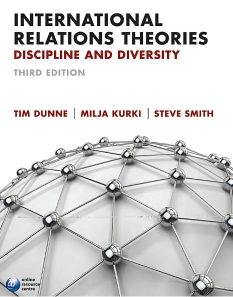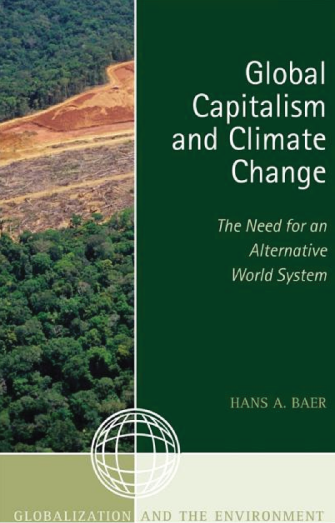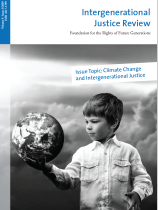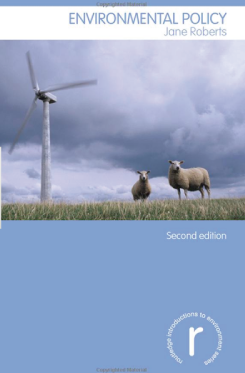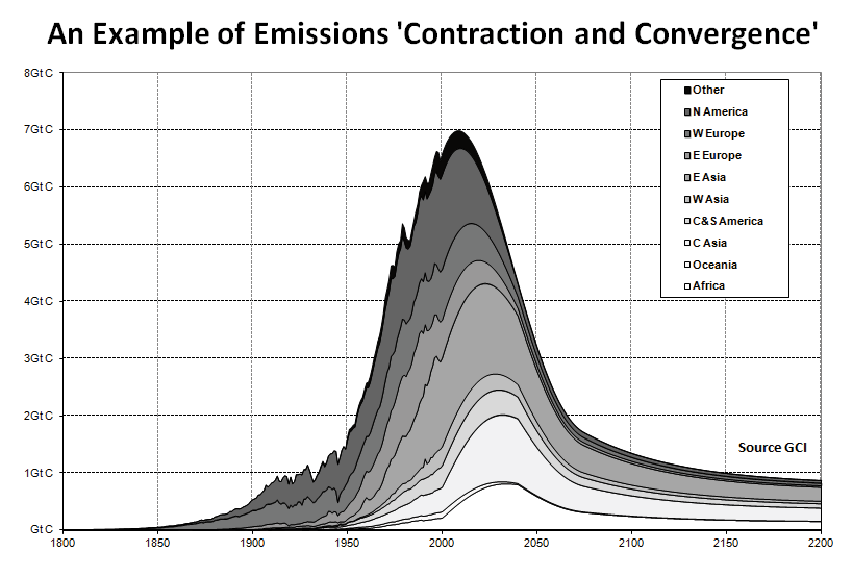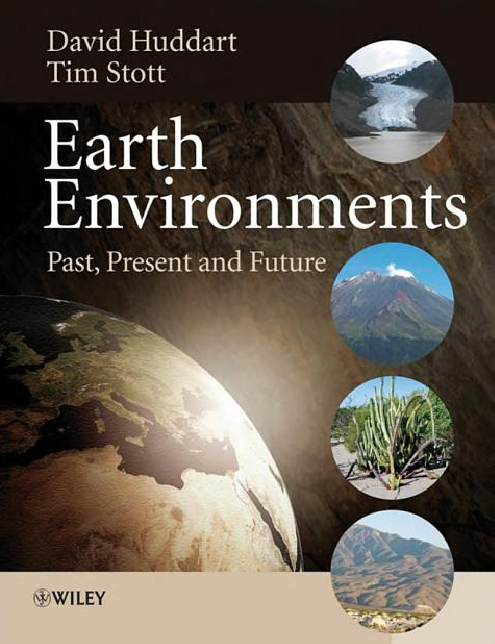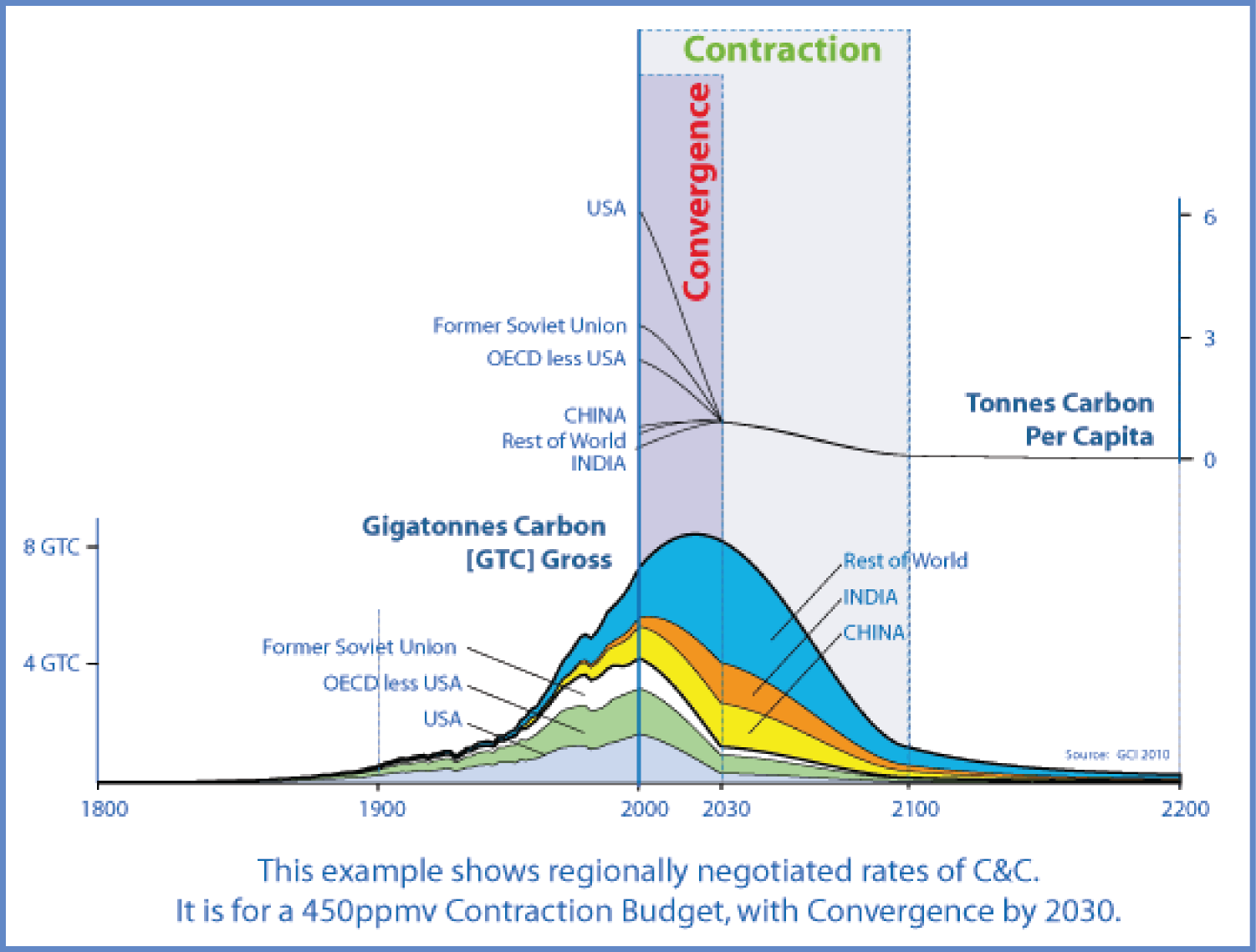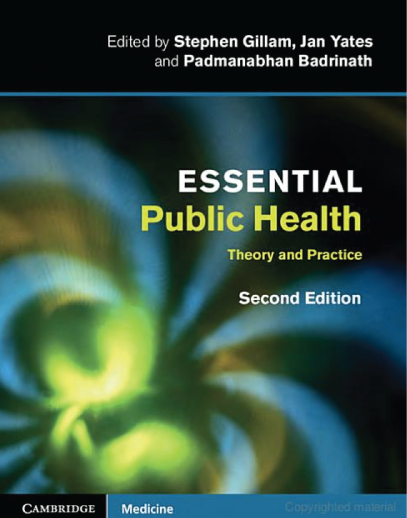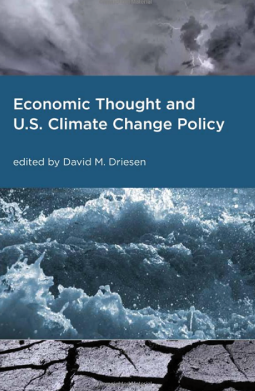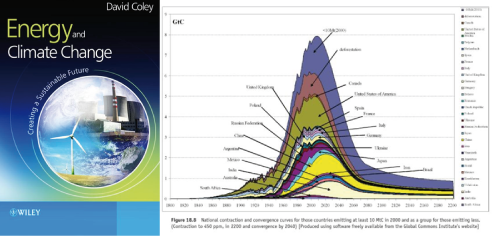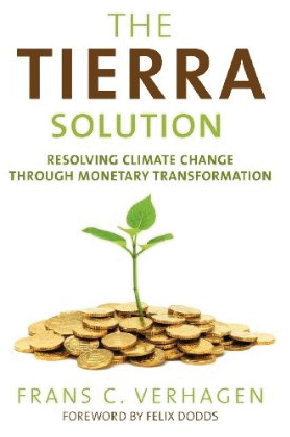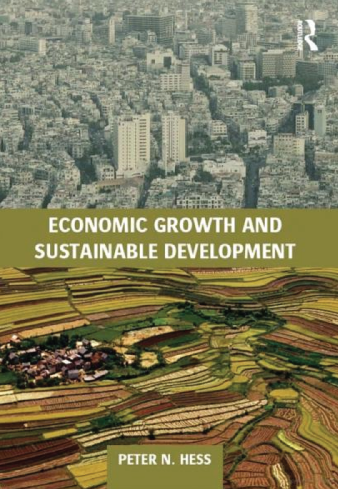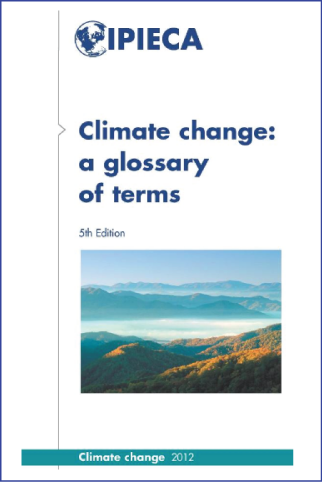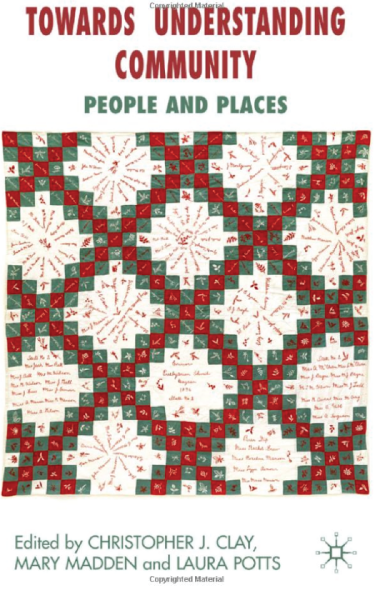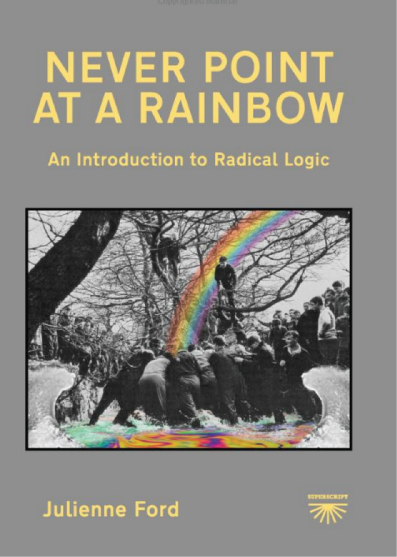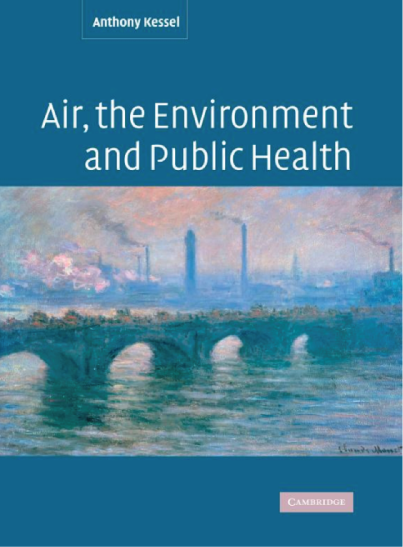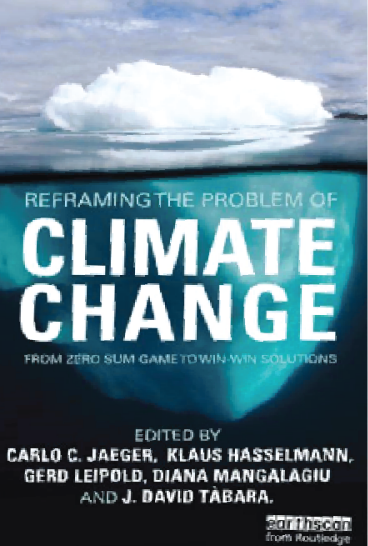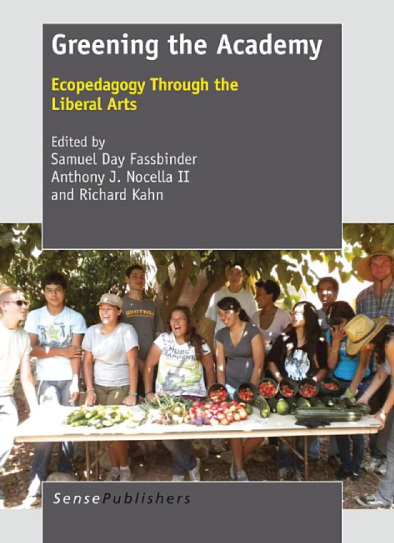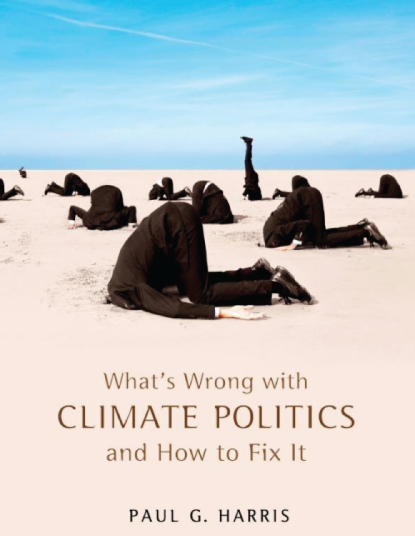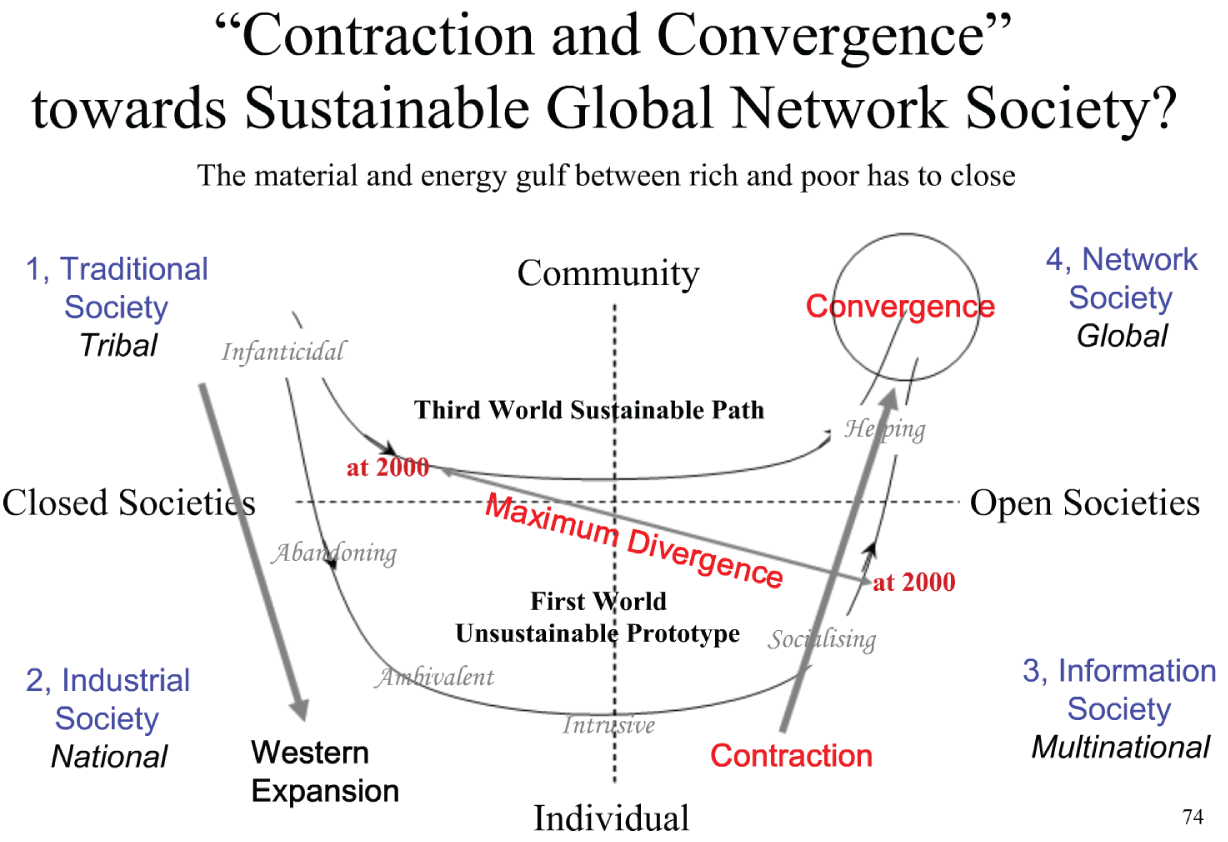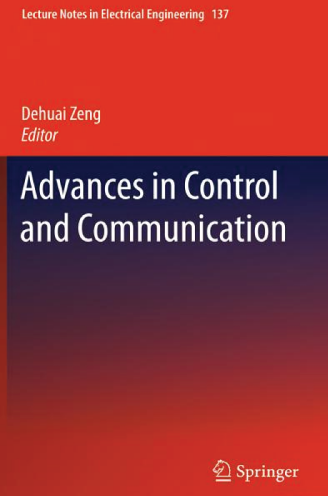One of the proposed UN Sustainable Development Goals aims to “reduce inequality while moving towards sustainable consumption and production”. The environmental constraints imposed by climate change and finite natural resources bring an added dimension to the effort to reduce poverty and inequality. Twentieth century tools such as trickle-down economics, deregulation, resource-based growth and inept global governance are no longer suitable.One solution is ‘Contraction and Convergence’, developed by the Global Commons Institute. This calls for industrialised countries to reduce their emissions while developing countries increase theirs to allow for development and poverty reduction.
Dr David King
Senior lecturer in General Practice, University of Queensland
In the Medical Observer23 May 2013 - "C&C would generate resources for Developing Countries." German Environment Ministry
Contraction and convergence
Under Contraction and convergence (C&C) (GCI 2005; Meyer 2000), all countries participate in the regime with quantified emission targets. As a first step, all countries agree on a path of future global emissions that leads to an agreed long-term stabilisation level for greenhouse gas concentrations (‘contraction’). As a second step, the targets for individual countries are set in such a way that per capita emission allowances converge from the countries’ current levels to a level equal for all countries within a given period (‘convergence’). The convergence level is calculated at a level that resulting global emissions follow the agreed global emission path. It might be more difficult for some countries to reduce emissions compared to others, for example, due to climatic conditions or resource availability. Therefore, emission trading could be allowed to level off differences between allowances and actual emissions. However, C&C does not explicitly provide for emission trading. As current per-capita emissions differ greatly between countries some developing countries with very low per capita emissions, (e.g. India, Indonesia or the Philippines) could be allocated more emission allowances than necessary to cover their emissions (‘hot air’). This would generate a flow of resources from developed to developing countries if these emission allowances are traded.
Emerging Economies - Potentials, Pledges and Fair Shares of GHG Reductions
ENVIRONMENTAL RESEARCH OF THE GERMAN FEDERAL MINISTRY OF
THE ENVIRONMENT, NATURE CONSERVATION AND NUCLEAR SAFETY23 May 2013 - "We use C&C as an indicator for over-arching Equity goal ." Bioregional recommendation on post-2015 agenda.
BioRegional’s recommendations to the High-Level Panel on the post-2015 development agenda
Transferable learning from a successful civil society sustainable development frameworkEquity as a cross-cutting principle or overarching goal.
All goals should be based on the principle that developed countries become more resource efficient, whilst developed countries grow in a sustainable and resource efficient way. BioRegional uses contraction and convergence of ecological and carbon footprint as one indicator for this.One Planet Living - sustainable development framework and implementation tool
One Planet Living is based on people, what they need and what they consume. It is a sustainable development framework that is transferable across sectors and can be implemented at all scales- from individuals, to the London 2012 Olympic and Paralympic Games, to construction and retail companies, to cities and municipalities and at the national level.
It is a simple, holistic framework that encompasses ten integrated social, economic and environmental principles, where each principle contains specific sustainability targets and indicators.
To date, this framework is being implemented in 12 countries and the freely available online One Planet Living toolkit has been accessed by people in 51 countries. The UN is in the process of recognising the One Planet Living programme as an official UN Partnership.We believe the lessons we have learned through implementing the One Planet Living framework are transferable and can inform the post-2015 sustainable development agenda
23 May 2013 - "C&C remains a possible basis for world agreement on climate." HURIA Journal of the Open University of Tanzania
Contraction and Convergence
By the stage of the Johannesburg Conference of 2002, Odera would also have been aware of the suggested criterion for the distribution of greenhouse gas emission entitlements, namely that every human being alive should have an equal entitlement to every other, and of the related programme for the application of this criterion to the international scene, that of Contraction and Convergence. This idea was conceived in the mid-1990s by the London-based Global Commons Institute (GCI), which had been founded in 1990 by Aubrey Meyer, a musician turned environmental campaigner, whose book Contraction & Convergence, The Global Solution to Climate Change was republished in 2005 (Meyer 2005). Contraction and Convergence has won the support of a number of governments, and remains a possible basis for a world agreement on climate change.
HURIA
Journal of the Open University of Tanzania
22 May 2013 - "C&C a popular model." International Relations Theories, Tim Dunne, Milja Kurki, Steve Smith
One popular model is 'contraction and convergence' developed by the London-based Global Commons Institute, which proposes a major contraction of emissions by the rich countries and an eventual per capita convergence by all countries at a level that the atmosphere can safely absorb. This model provides developing countries with some room to grow, while also facilitating a considerable transfer of resources from the high per capita emitters to the low per capita emitters under carbon -trading schemes.In contrast, the negotiation of the post-Kyoto treaty is likely to follow the approach of the Kyoto Protocol, which avoided a principled-approach to the allocation of targets based on responsibility and capacity, and the best -available science, and simply left it to individual developed countries to choose their own targets. Moreover, some green critics argue that the 'flexibility instruments' introduced into the Kyoto Protocol, such as carbon trading and offsetting, enable those industries which can afford to purchase credits or offsets to continue their carbon pollution and avoid or defer the necessary green investment that would reduce their emissions at source.
Flexibility thus serves to hollow out the responsibility of rich countries and undermine the UNFCCC norm that developed countries should lead the way in combating climate change by pioneering new, low carbon technologies and practices. While it is accepted that the participation of all major carbon emitters (including the USA, the EU, Russia, Japan, China, and India) is essential to the success of a post-Kyoto treaty, the terms of that participation must be such that environmental injustices are ameliorated rather than exacerbated.
21 May 2013 - "If modellers can't capture dangerous feedbacks, they're omitted. Best guess surely not zero." Nicholas Stern tells IMF13 May 2013 - "The need for an Alternative World System. C&C supported by many." Global Capitalism & Climate Change Hans Baer
Global Capitalism and Climate Change
Hans A Baer
Contraction and convergence and asserts that every human on Earth has equal rights to global atmosphere and a right to pollute on a per capita basis. This approach has been favored by India, China, and the Group of 77, which actually consists of about 133 nations. It has also been endorsed by France, Switzerland, and the European Union, despite the fact that developed countries will have to drastically reduce their emissions because most of them have already exceeded the requisite stabilization targets. The contraction-and-convergence approach was first proposed by the Global Commons Institute [Jarman 2007].
12 May 2013 - "C&C; many supporters amongst theoreticians." Intergenerational Justice Review
Certificate egalitarianism, popularized by the Global Commons Institute under the name of ‘contraction and convergence’, aims at an equal distribution of emission certificates to all persons (convergence) over the medium term, where the sum of the certificates is defined by a global reduction target (contraction). Certificate egalitarianism is a specific precept (dealing only with certificate distribution), which may be justified as an application of the (primary) moral principle ‘resource egalitarianism’.Welfare egalitarianism, which is another (primary) moral principle, on the other hand, will not lead to certificate egalitarianism because an equal number of certificates for different people will often lead to different levels of wellbeing or welfare. Certificate egalitarianism has found many supporters among theoreticians.
Intergenerational Justice ReviewIn this legalistic language, it also follows however, that an unqeual number of certificates for different people will not necessarily sum to a contraction event that is consistent with the reduction target. The point is that C&C is not about 'egalitariansim', it is about UNFCCC-compliance and the absolute requirement of a reduction target for that, a point that is frequently - even routinely - lost by great minds.
12 May 2013 - "IMHO C&C the only viable bridge between science & policy." Jane Roberts Open University
The Contraction and Convergence model (C&C), developed by the Global Commons Institute, seeks to reconcile the goals of greenhouse gas stabilisation and international equity. Figure 7.3 illustrates one possible scenario for projected emissions from various regions of the globe were the model to be adopted.
Environmental Policy (Routledge Introductions to Environment)
Jane RobertsDear Aubrey
IMHO C&C is the only viable means of bridging the gap between what the scientists say is necessary and what the politicians say is possible.
Yes, please add me to the list.With best wishes, Jane
Jane Roberts
Staff Tutor in Mathematics, Computing and Technology
The Open University
4 Portwall Lane
Bristol BS1 6ND
11 May 2013 - "At UNFCCC we support C&C." Sustainable Development Goals Population Matters
In the climate change talks, we support contraction and convergence between rich and poor countries, with a population base year. (cf Kofi Annan: “Contraction and convergence with a population base year should be the basis for [climate equity]. Key Recommendation, GHF 2009).
We also support convergence as a poverty alleviation goal, between and within countries, as this would tend to reduce the birth rate, as well as gross income inequality. Under the MDGs, the proportion of people living in extreme poverty i.e. under $1.25 per day fell by half from 1990 to 2010. However, a smaller proportion of a larger number can still be a larger number, as has happened in Africa; and it is numbers of people, not rates or proportions, that need ever-increasing food, water, soil, energy etc.SDG: Reduce the number of people in extreme poverty by half, through economic growth in the poorest countries, contraction and convergence between countries, and reduction of income inequality within countries.
09 May 2013 - "C&C - the last hope?" Earth Environments, Past, Present & Future. David Huddart & Tim Stott.
Contraction and converqence: The last hope?
Supported by China, Germany, The European Parliament, Stern and many others, this concept is on the idea that everyone on planet Earth has the right to emit the same quantity of GHG. At present a US citizen emits 20 tonnes of CO2 each year, a UK citizen emits 11 tonnes while a Nigerian only emits 0.09 tonnes. Contraction and Convergence [C&C] is the Global Commone Institute's proposed UNFCCC-compliant climate mitigation strategy for an equitable solution to cutting greenhouse gas emissions through collective global action.The ultimate objective of the UN Climate Treaty is to move to safe and stable GHG concentration in the atmosphere and C&C starts with this. C&C recognizes that subject to this limit, we all have an equal entitlement to emit GHGs to the atmosphere, since continuing unequal use will make it impossible to get global agreement needed for success. The Kyoto Protocol cannot be the basis of this success, because it is not science-based and, due to divergent national interests, it does not include all countries.
Scientists have advised on safe concentration of CO2 in the atmosphere and on the global cap on emissions necessary to achieve it. A level of 450 ppmv has until recently been regarded as the upper limit for keeping under the maximum temperature oncrease of 2 degrees above the pre-industrial average.
From the inception of a global agreement, C&C schedules the mandatory annual global contraction [reduction of emissions] that will keep CO2 concentrations from rising beyond the agreed safe level. This rate of contraction must be periodically adjusted to take account of the increasing release of GHGs caused by climate warming. C&C proposes emissions entitlements to every country. While starting with current emissions, it proposes a scheduled convergence to equal per person entitlements for everyone on the planet by an agreed date [see figure above]. That way, convergence will reduce the carbon shares of the developed over-emitting countries sharply until they converge with the [temporarily rising] shares of the developing countries. The latter will be able to sell their surplus carbon shares to the wealthier nations. Emissions trading will be subject to rapid investment in renewable energy.
The 14th session of the Conference of the Parties to the Climate Change Convention [COP-14] will be held in conjunction with the 4th Conference of the Parties serving as the Meeting of the Parties to the Kyoto Protocol [COP 14] in Poznan, Poland, from 1 to 12 December 2008. In 2012 the Kyoto Protocol expires. To keep the process going there is an urgent need for a new climate protocol. In 2012 the Kyoto Protocol runs out. It is to be hoped that discussions at the Climate Conference in Copenhagen in 2009 and subsequent agreements lead to a Copenhagen Protocol to prevent global warming and climate change.
Earth Environments: Past, Present and Future
By David Huddart, Tim StottAubrey,
I would be happy to support GCI's current C & C proposal to UNFCCC.
There is an immediate need for more action on climate change and a response from all governments and international organisations like the United Nations.
Individuals too can help in this and educational establishments like ours can educate students in a positive manner.
Best Wishes
David
Professor David Huddart
Director of Research Faculty of Education,
Community and Leisure
I.M.Marsh Campus
Liverpool John Moores University07 May 2013 - "C&C a workable Economic Model." Essential Health Stephen Gillam, Jan Yates & Padmanabhan Badrinath
Redistributing resources
Food (above) is a good example of how we can redistribute resources in the interests of everyone, both now and in the future. Sadly, too many people seem to believe that one person's (their) good fortune relies on another's misfortune - often someone far away of whom they know little and care less. The obvious (and growing) interdependence of us all, both with each other and the biosphere that supports us, should make us understand that it is in no-one's interest to have gross disparities in needs and opportunities. Water, the lack of which kills most quickly, is perhaps the resource that is (and will) cause most conflict, as there is no alternative. But oil is the resource where we have the most potential to address our dangerous dependency. Decarbonising the global energy supply means a range of renewable resources. One of these (concentrated solar power from the world's deserts coupled with a global electricity grid) has the potential to move energy from the warmest (and often poorest communities) in the world to the more industrialised countries, and crucially to move resources to pay for it back again, whilst promoting energy security; sec, for example, the work of the Desertec Foundation. This is possibly the only practical strategy that improves health, promotes social justice, and is integrated with workable economic models such as Contraction and Convergence (a proposed global framework for reducing greenhouse gas emissions that combats climate change at the same time as promoting social justice; see. Within health services globally, health professionals and health systems have huge potential to exploit some of these opportunities for the health of people today and the health of populations in the future (and elsewhere now).
Essential Public Health
Stephen Gillam, Jan Yates and Padmanabhan Badrinath
05 May 2013 - "C&C has been endorsed by Angela Merkel." Economic Thought & US Climate Change Policy David Driesen
A number of academics and policy analysts have proposed some version of this idea. The Global Commons Institute has been advocating it in international climate negotiations since1990, under the name Contraction and Convergence. Under their proposal, the developed nations would be given an adjustment period of several decades during which time they would "contract" their emissions until the world finally "converged" on a uniform per capita allocation. Their proposal has been endorsed by a number of governmental and nongovernmental organizations, including the European parliament and India. The general approach has been endorsed by German Chancellor, Angela Merkel among others. GCI has suggested setting a deadline of either 2020 or 2050 for reaching an equal shares allotment.
See GCI briefing
Economic Thought and U.S. Climate Change Policy
David M. Driesen04 May 2013 - "C&C is essentially Pragmatic" Energy & Climate Change Professor David Coley University of Bath
CHAPTER 18 POLITICS IN THE GREENHOUSE: CONTRACTING AND CONVERGING
Together, these steps represent an approach called Contraction and Convergence (C&C). Although it does have an ethical basis, C&C is essentially a pragmatic approach. Given the need to create a worldwide solution, because of growing emissions from the developing world and the reluctance of the USA to contemplate an approach which is not worldwide, C&C resolves this problem.
Contraction and Convergence Green Books 2000 Meyer.
A personal account of the subject and of the climate negotiations.
Energy and Climate Change: Creating a Sustainable Future
David ColeyHi Aubrey
Just to say I strongly support GCI's C&C Proposal to the UNFCCC.
David
Professor David Coley
University of Bath04 May 2013 - "C&C - there's much to recommend it." The Tierra Solution Resolving Climate Change Frans C Verhagen
"Contraction and Convergence (C&C), pioneered in the early 1990s by the Global Commons Institute (UK-based independent organization campaigning for climate change). Contraction refers to the process of reducing carbon emissions; convergence refers to the coming together of the emissions levels of industrialized and developing countries. C&C posits a contraction period for high-carbon nations, which allows them to converge with low-carbon nations, after which the equal sharing can begin. It is only when the high-carbon countries have decreased their carbon footprint and the low-carbon countries have reached their low-carbon and high-growth-development levels that convergence can take place. 'This convergence period would take place around 2030, according to the graph: -
C&C is an idea that has been gaining a lot of ground over recent years, with much to recommend it above the cap-and-trade approach of the Kyoto Protocol:
The TIERRA Solution Francis Verhagen
- It sets firm global caps
- It includes all countries in its framework,
- it spells out the ‘equity principle’ the fair principle - implicit in the allocation of emissions rights to countries on a per capita basis.
04 May 2013 - "An unprecedented degree of interntional cooperation underlies C&C." Economic Growth & Development P N Hess
Even if there is a consensus on the goal of limiting CO2 concentrations in the atmosphere to 450 ppm, how to achieve this target equitably and efficiently is contentious. One scheme, known as contraction and convergence, involves setting a global target for CO2 concentrations and determining the per capita emissions consistent with attaining this goal (Coley 2008) he underlying premise is that every person on the planet should have the right to emit same amount of carbon- a premise compatible with Rawls's veil of ignorance. Many low-income nations would be allowed to increase their carbon emissions as their economies grow. High-income economies and many other developing economies would have to reduce their carbon emissions.
Countries would be issued marketable carbon renni15 consistent with the scheduled global reductions in CO2 emissions and the goal 0 converging to common per capita carbon emissions. Reducing annual carbon emissions, however, can be compatible with economic growth if accompanied by advances in energy efficiency and effective mitigation. Since the annual number of global carbon credits would be reduced over time, the market value of the credits would increase. Clean energy and technologies to reduce carbon emissions would be stimulated. Developing countries well below the common convergence target, of say 0.4 tons of carbon emissions per capita (which is less than 10 percent of the world average for 2008 of 4.8 tons per capita), would be allowed to grow and could sell their surplus carbon credits to the developed countries, presently consuming well above the common carbon emissions target.
While this global cap and trade scheme for carbon emissions is straightforward in theory, there are dearly a number of challenges, not the least of which will be getting the developed nations to comply. With no supranational authority to enforce international treaties, compliance across nations is voluntary. As evidenced by the earlier Kyoto Protocol (never accepted by the US), which only set voluntary targets for individual countries to reduce CO2 emissions, and the disappointing resolution of the Copenhagen Climate Conference in December of 2009, national sovereignty continues to trump international cooperation. Even if all nations were to accept the idea of contraction and convergence with marketable carbon emission permits, distributing the permits, monitoring compliance, and enforcing sanctions would require new international authority, perhaps an International Environmental Fund, modelled after the International Monetary Fund. Underlying such unprecedented international cooperation would have to be fundamental changes in the perspectives and priorities of the human race.
Economic Growth & Sustainable Development
Peter Neal Hess03 May 2013 - C&C as seen by IPIECA 2012
Contraction and Convergence
Some have promoted the idea of 'contraction and convergence' as a long-term strategy for managing global GHG emissions. Contraction refers to a declining global cap which would be set on worldwide emissions, together with a reduction trajectory over many decades. Typically, emissions entitlements would be allocated to nations by a formula that would converge over time towards equal per capita emission rights. Proponents of the system of contraction and convergence argue that it is equitable - being based on population - and that it would be truly global, involving the participation of all countries.
IPIECA 201203 May 2013 - "C&C is 'Plan B' ." Towards Understanding Community People & Places Christopher Mary Madden Laura Potts
Some progress is being made towards change in the UK as some of the examples given here show, but the biggest losers from the climate change/unsustainable communities gamble are in the developing world or global south. Those countries who are presently contributing least to global warming will be the ones who will feel the full force of its impacts first, and it is these countries who are offering a solution to the failing global action on climate change. The Global Commons Institute (GCI) presented an agenda for solving the global crisis of climate change at the Second World Climate Conference in 1990. This was called, Equity for Survival. Gel argued that, 'whilst the traditional proposition of equity for its own sake was a dream, unless the new and more rigorous proposition of equity for survival was adopted, the nightmare of global climate de-stabilisation would follow' (GCI website 2006). In 1996 GCI devised a greenhouse gas abatement methodology based on Equity and Survival called Contraction and Convergence. GCI argue:"Limits to growth - certainly of fossil fuel consumption - must now be observed if we are to avoid this climate crisis. Unt.il now however, the limits-free expectations encouraged by the success of laissez-faire economics have been obscuring this. It will be impossible to observe these limits unless, from now on, implementation is internationally configured in a way which corrects the skewed distribution between the rich and poor. This converts a merely moral dilemma into a moral imperative. Because everyone - regardless of status - is now increasingly vulnerable to the impacts of climate change, the rich have little choice but to share the burden of contraction fairly."(GCI website 2006)
A framework such as Contraction and Convergence could be the late solution that those advocating sustainable development have been looking for. It is a way to ensure that the hardest part of the sustainable development balancing act - that of protecting the environment - is tackled properly. Its implementation and impact remain to be seen post-Stern.
Essentially the GCI felt that, 'Contraction and Convergence is the only long-term framework for regulating greenhouse gas (GHG) emissions which does not make carbon dioxide production a luxury that only rich nations can afford' (Meyer 2006). Contraction and Convergence appears to provide a straightforward model for an international agreement on greenhouse gas emissions. It sets stable and safe targets for greenhouse gases in the atmosphere and a date by which those concentrations should be achieved; all based on best-scientific evidence. The atmosphere is regarded as a 'global good' and Contraction and Convergence states that everyone on earth has a right to emit, and under the framework will be given an equal right by a future date. This allowance for each individual will be derived from the safe global targets: 'So from the grossly inequitable situation we have now, per capita emissions from each country will "converge at a far more equitable level in the future; while the global total of emissions will "contract'" (Meyer 2006).
Contraction and Convergence was starting to be seen as a 'plan B' for climate change by 2003 and has been increasingly gaining support: The idea has been around for a decade, but lately it has been gaining ever more influential converts, such as the UK's Royal Commission on Environmental Pollution, the UN Environment Programme, the European Parliament and the German Advisory Council on Global Change, which last week released a report supporting the idea (Pearce 2003).
Towards Understanding Community People & Places
Christopher Mary Madden Laura Potts03 May 2013 - C&C; Bouquets & Brickbats from Julienne Ford in Never Point at a Rainbow, An Introducation to Radical Logic
In his book, Contraction and Convergence, Meyer tells the story of GCI's battle to construct an international global solution to the global problem.First GCI set about demonstrating the correlation between C02 emissions from fossil fuel burning and per capita income over time. In the process they decisively demolished the argument of the business-as-usual economists who have always claimed that
the more "developed" nations are more "efficient" than the lower income countries because they create more income per tonne of fossil fuel burned. On the contrary, Meyer, Cooper and Bradney analysed the historical records and demonstrated that "high-income/high-emissions economies produce and consume less efficiently in terms of dollars-worth of goods and services delivered per tonne of carbon burned than do low income countries with a low emissions impact". Indeed they showed that this pattern is systemic rather than merely accidental.In other words the polarised consumption patterns we have sustained (and concealed) globally since at least the end of the last war are the results of the way that a structurally dysfunctional global economic system has operated. Certainly the under-consumption of [poorer nations] has been consistently concealed by the over-consumption of [richer nations], who, although they were out-numbered two to one by the [poor ones1, had fifteen times the hard currency purchasing power.
Meyer and his colleagues even managed to demonstrate, to the embarrassment of opponents of the anthropogenic thesis, that the calculations that had been used to claim that ameliorating action was too expensive were based on undervaluation of the lives of people in the poor countries "because their ability to buy the right to live was only a fifteenth of those in countries where productivity had been boosted by the use of fossil fuels".
Once the cloak of phony science and distorted economics was ripped away, the underlying obstacle to controlling global pollution was revealed. Without its cloak of invisibility the business-as-usual paradigm was shown in all its age-old nakedness as the fundamental struggle between exploiters and exploited. On the one hand the underdogs (and the socialist, communist, and environmental internationalists, and the NGOs who supported them) made clear their moral case: why should they be curbed in their fuel consumption and prevented from the benefits of industrial development and economic growth that had fattened the imperial powers? On the other hand the expropriators themselves, especially the Anglo-Saxons on both sides of the Atlantic, dug their heels in, and refused to consider cutting even their projected rate of increase in C02 emissions if the "developing world" (specifically China, India and Brazil) was going to be allowed to develop all the dirty old technology that they had themselves pioneered and deployed without restraint.
The GCI considered that this impasse called for pragmatism and compromise. Meyer came up with his trademark paradigm of contraction and convergence (C&C). The idea was to fix a date for convergence, say 2030, from which time forwards every person on the planet would have an equal lifetime ration of "carbon"; thus the allocation for a nation would be this per capita allowance multiplied by the nation's population. Until that fixed date those countries (called "Annex I" countries) whose consumption of fossil fuels, and consequent C02 emissions, exceeded the notional per capita allowance would be required to contract their consumption/emissions down to the target rate. The corollary was that those nations ("non-Annex I") whose current consumption is below the target allowance would be allowed to increase their consumption as they developed their industry, but only up to the target date, and never above the fixed per capita rate that had been decided.
So far so good? This sounds quite reasonable does it not?And, but for one thing, it would be. That one thing is the bad patch in the apple that has been infecting the theorising and practical politics of the UK Green party since its inception. It is the rotten idea that the pit-bull market, always straining at the regulatory leash, must ultimately be given its head. 19 You see, contraction and convergence is inseparable from the concept of carbon trading. The mechanism driving the C&C is supposed to operate through a sale by those nations who have carbon credits that they cannot use (because they can 't develop fast enough to burn enough fuel!) to those nations who 'need' them because their rate of economic growth remains unrestricted, and therefore their consumption, far from falling, is actually still rising! Once this point is grasped it is easy to see why an organisation like the Global Legislators Organisation for a Balanced Environment (GLOBE), led by a UK Tory MEP, is "on board" the C&C project, while the Association of Small Island States (AOSIS), Greenpeace and the Centre for International Environmental Law are not.
Desperate people have been known to take their essential tools to the pawnshop, or to sell their kidneys to ruthless transplant clinics, or their children into slavery. Some UK local governments actually mortgaged their street lights to the Japanese when they felt the financial pinch; nobody asked if they were "theirs" to sell. What is to stop a short-termist administration of any country from flogging of its people's carbon rights? And what is to stop the organisations of the exploiter countries, such as the IMF, from twisting the anus of the carbon trading institutions to shift the two goal posts – the date of convergence and the figure fixed for the per capita emission allowance?
A market is a market and trade is trade. If we assume that people are only motivated to act in their own selfish interests then it makes no difference if the trade is measured in dollars, gold, barrels of crude oil, or "emission-backed currency units" (ebcus). After all, each one-dimensional measurement system is translatable into each other. At the time I am writing, an ounce of gold is worth ten barrels of oil; if you supplied her with an electronic calculator, and the relevant exchange rate, the average eleven year old could tell you the dollar price of an ebcu.
We have seen how the GCI's perceived necessity to placate the worst exploiter nations (in order to get them even minimally committed to reducing, rather than continuing to accelerate, their climate damaging habits) has led to the pragmatic reductionist paradigm of carbon trading which Meyer and his colleagues eventually succeeded in "selling" to the United Nations. But like all one-dimensionalities it is a dangerous over-simplification.
Never Point at a Rainbow Julienne Ford02 May 2013 - "C&C Campaigning for Global Justice" Air, the Environment and Public Health." Anthony Kessel
Campaigning for justice in climate change
The Global Commons Institute (GCI), for instance, was set up in 1990 in London, and has been encouraging awareness of its solution to climate change called Contraction and Convergence. Put forward as the suggested international framework for the arrest of greenhouse gas emissions Contraction and Convergence argues that economic growth can continue at current ('business as usual') rates only provided large efficiency gains arc made and nearly all energy comes from renewable sources. Dramatic reductions in carbon dioxide emissions would ensue, with the possibility of emissions trading between richer and poorer countries. Without this the GCI estimates that by 2060 the (annual) costs of global damage caused by climate change would equal (and then rise above) the economic gains of increasing global production.
Air the Environmenta and Publica Health Anthony Kessel01 May 2013 - "Agreeing rates of C&C; the central challenge of International climate negotiations." Reframing Climate Jaeger et al
The central challenge of international climate negotialions is to agree upon the rate or contraction and convergence of the per capita emissions of all countries - an approach that was first discussed in the 1990s and has meanwhile become a basic pillar of UNFCCC.
Typical transformation paths computed under the budget constraint implied by the 2°C global warming limit yield total emissions peaking around 2020, decreasing rapidly thereafter to very low val ues by the middle of the century. The later the emissions peak, the more rapid and challenging the required subsequent rate or decrease. To satisfy realistic contraction and convergence criteria, the emissions of the industrialized countries need to start decreasing immediately in order to accommodate longer emission growth phases for the emerging and less developed economics.
Adherents of the top-down approach argue that the global interdependencies mandate global solutions in the fo rm of binding international climate agreements. The most straightforward way to realize equitable contraction and convergence trajectories, for example, would be to apply a 'stick' policy in the rorm of a global cap-and-trade system generalizing various regional or national cap-and-trade systems, such as the European Emission Trading System (ETS) or similar schemes in the US.
In the approach proposed by Wicke and Durr-Pucher (2006), for example, each country would be assigned a total number of emission permits proportional to its population, in accordance with the principle of equal per capita emission rights. Countries with low per capita emissions would then be able to sell their initially surplus emission rights to countries with higher per capita emissions, thereby achieving two important objectives: (i) global investments would be attracted into the most effective channels for reducing emissions; (ii) capital and technology would be transfrerred from the industriaJ countries to the emerging and less developed countries.
Thus the resultant contraction and convergence trajectories would be economically optimal, generate transfers from industrialized countries to emerging and less developed countries, and be consistent with the principal of equal per capita emission rights. Each country would furthermore be able to implement its own individual policies for reducing emissions, for example, by auctioning its national contingent of emission permits and using the income for subsidies for renewable energy, or by introducing additional emission regulations. The basic principle of equal per capita emission rights would need, of course, to be adjusted to allow for different regional climates, different access to natural resources, etc. and would also need to be augmented by further global agreements on non-C02 greenhouse gases, on deforestation, etc.
Reframing the Problem of Climate Change
Carlo C. Jaeger, Gerd Leipold, Diana Mangalagiu, Klaus Hasselmann, J. David Tàbara01 May 2013 - "Known for obvious reasons as C&C." Ethics an Overview, Robin Attfield
To prevent things becoming worse still, it is vital that greenhouse gas emissions, including crucially carbon emissions, be curtailed. (Even climate change sceptics who admit that there is some reason to believe that global warming is due in part to humanity should endorse this view, in accordance with the Precautionary Principle: see the section on Practice Consequentialism and Virtue-Consequentialism.) This will involve early and consistent action at individual, local, national and international levels. Reaching a global agreement on emissions mitigation has become indispensable and urgent.Here is one possible basis for such an agreement. The annual total of permissible emissions is calculated, and emissions entitlements are then shared equally among everyone alive (at a date to be agreed). Entitlements are then allocated to countries in proportion to their population. The total is progressively reduced to ensure that average temperatures rise no more than the agreed target. Countries not using their full entitlement are then allowed to sell it to those requiring an additional entitlement. This system, which is known for obvious reasons as Contraction and Convergence, would redistribute resources, and trading could be limited so that no country can sell emissions required to satisfy the basic needs of its inhabitants.
As Peter Singer has argued, this system can be supported by consequentialists, because of its considerable benefits to humanity and other sentient creatures.) Biocentrists can readily endorse this verdict. However, it is more important that there should be a global agreement than that it should adopt this particular shape.
It is also crucial that whatever agreement is reached it is then implemented in each country. We all need to reflect on the contribution of our consumption and our travel to carbon emissions, and as individuals and households to modify our lifestyles accordingly. Such decisions also affect the cultural climate, and make it more feasible for governments to play their part. This is, perhaps, a fitting note on which to conclude our study of environmental ethics.
Ethics and Overview Robin Attfield01 May 2013 - "C&C this elegant solution; key to implement a Green Economy." Greening the Academy; Fassbinder, Noella, Kahn
Green Economics is intrinsically supportive of the Contraction and Convergence based on the principle proposed by Aubrey Meyer of the Global Commons Institute initially for reducing global carbon emissions by a consensus of contracting larger emitters and expanding emitters who are not using enough. This elegant solution is based on social and environmental justice and so is attractive to green economists. It has been adopted as a principle for carbon by the UNFCCC. As economists, green economists also regard it as a key idea to implement a green economy. In practice less developed countries can still grow to meet in the middle range of basic living standards but those over consuming countries need to contract to meet in the middle to ensure that there is enough to go round.
Greening the Academy; Ecopedagogy Through the Liberal Arts
Samuel Day Fassbinder, Anthony J Noella and Richard Kahn
01 May 2013 - "Some form of C&C is essential." What's Wrong with Climate Politics & How to Fix It. Paul Harris
Several frameworks have been proposed to make people more explicit objects of climate diplomacy? For example, Aubrey Meyer's concept of contraction and convergence effectively calls for setting an equal per capita allowance of greenhouse gas emissions, followed by a gradual contraction of emissions in nations where they are above the allowance and an increase in emissions for those below the allowance, to the point where emissions converge. While it is developed nations that are expected to contract and developing nations that will converge, what is unusual here is that the fundamental measure of which nations must do what is directly related to per capita emissions. Human beings are a bigger part of this proposal than in the standard approaches discussed in most of the climate change negotiations among nations.
Some form of contraction and convergence is essential if the world's responses to climate change are to be fair over the long term. While there may be instances where some people are entitled to pollute the atmosphere more than others – for example, if they live in circumstances that require doing this as a means of survival - making such exceptions will require justification.
What's Wrong with Climate Politics and How to Fix It.
Paul Harris
01 May 2013 - C&C in 'Any Way You Slice It' S. Cox "GCI led; global emissions contract dramatically, per capita emissions converge."
Most estimates of the size of the reduction needed in human ecological impact focus on greenhouse-gas emissions, because the numbers necessary for making such calculations are readily available. One-third of Earth's human population creates 90 percent of greenhouse-gas emissions. International climate negotiations have repeatedly broken down over the question of how to share the burden of emissions reductions among rich and poor countries. In the 1990s, the Global Commons Institute (GCI) introduced the "contraction and convergence" model, under which global emissions would contract dramatically while per-capita emissions of rich and poor countries would converge at the global average. In practice, this would mean deep reductions in the global North and modest increases in much of the South. GCI's current figures project that, in order to achieve the required degree of contraction and convergence, the North's emissions should be 80 percent below today's level by sometime between 2020 and 2050 [7]. These and other estimates seem to converge on a 60 to 80 percent reduction for the highest -consuming countries. They imply not only reductions of that size in fossil-fuel consumption but similar reductions in the stresses we are placing on all other resources and the ecosystems that provide them.
Any Way You Slice It
Stan Cox
01 May 2013 - "C&C towards a global network society." Another take on Contraction & Convergence - David Leevers BA MIEY
From Atoms To Bits Culture, Collaboration and Global Sustainability
Slide Show from David Leevers, BA, MIET, www.vers.co.uk
VERS Associates, Virtual Environments for Real Societies
CDS, Clinic for Dissociative Studies, London
Based on the presentation "From a Psycho History to a Sane Future",
International Psychohistorical Association, 27th Annual Convention, New York, June 2004
This web adaptation of the presentation has been continually amended in the light of comments.
Slides now discuss how culture breakdown can lead to dissociation, how collaboration breakdown can lead to schizophrenia and how learning from these failures might help us work towards a Sustainable Global Network Society.
01 May 2013 - "Per Capita; C&C; Historical Per Capita" Positioning in Advances in Control & Communication D Zeng
Establish and improve Mechanisms for initial Allocation of Emission Rights
Carbon emissions trading is the most important issue in the initial allocation of emission rights, different distribution methods will generate different environmental and economic effects, thus affect the competitiveness of enterprises, cause a fair question.
Current international allocation of carbon emission rights have: equal per capita allocation method and the contraction and convergence approach, allocation based on historical emissions, or based on the latest data distribution and sale distribution and mixing distribution.The international allocation of carbon emissions on the distribution is both economic and also political game; the role of each country varies. For China and other developing countries, in order to take full advantage of the advantage, to ensure that the technical conditions of use should be taken based on the historical per capita emissions equivalent way.
Advances in Control and CommunicationUNFCCC C&C Submission - Support for Submission - CBAT - Responses to CBAT


